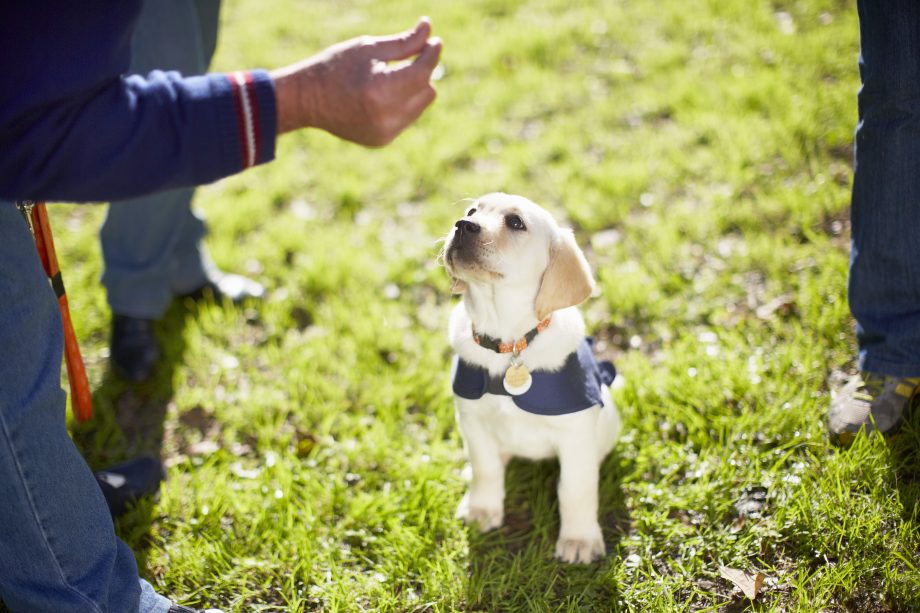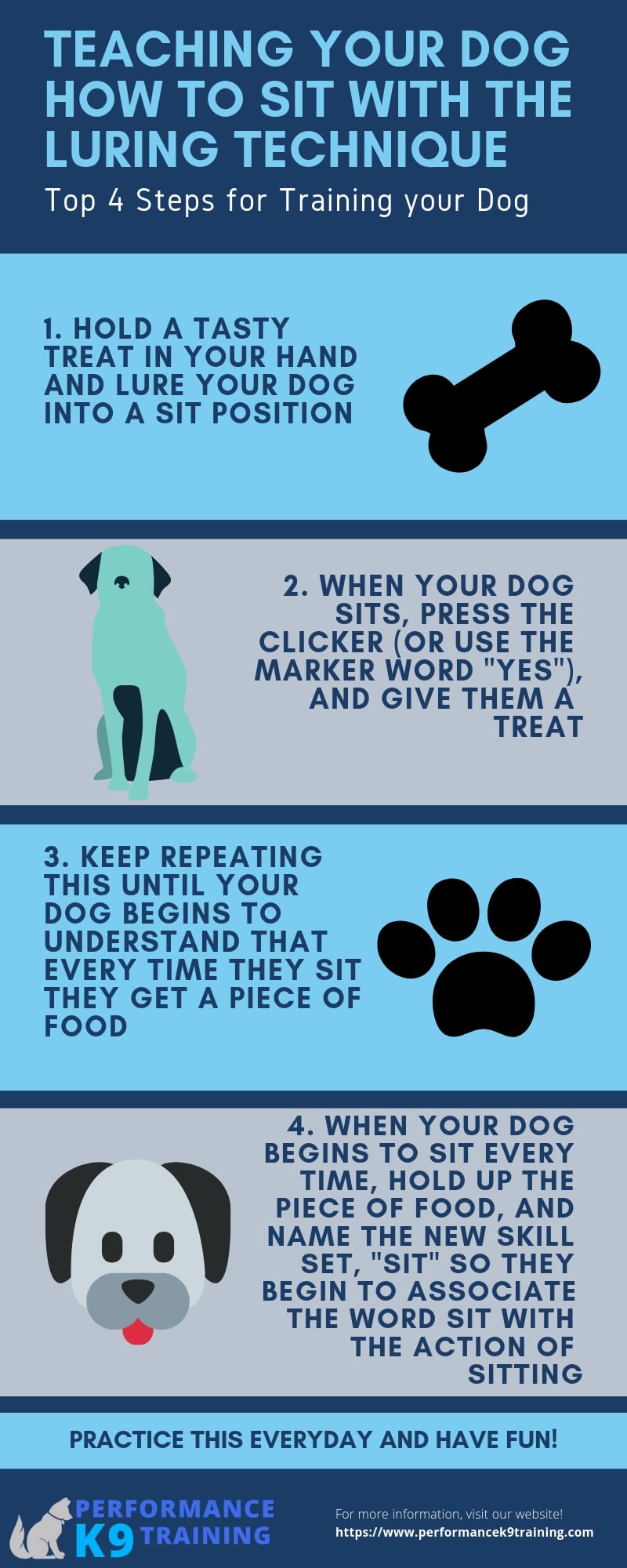How Do You Train a Dog to Sit: Quick & Effective Tips

How Do You Train a Dog to Sit? Training a dog to sit is a fundamental skill that every pet owner should know. This simple command helps establish good behaviour and strengthens the bond between you and your dog.
Teaching your dog to sit may seem easy, but it requires patience and consistency. This basic command is not just about obedience; it lays the groundwork for more advanced training later on. A well-trained dog is happier and more relaxed.
Plus, it can be a lifesaver in various situations. Whether you’re starting with a puppy or working with an older dog, the process can be enjoyable for both of you. Let’s explore effective methods and tips to help your furry friend learn this important command.
Introduction To Dog Training
Teaching your dog to sit is very important. It helps with control and safety. The command ‘sit’ is one of the first commands to teach. This command can stop your dog from jumping or running.
Here are some benefits of teaching’sit‘:
- Improves communication between you and your dog.
- Helps your dog focus on you.
- Can prevent bad behaviour in public.
- Encourages calmness in different situations.
- Can be a step to teach other commands.

How Do You Train a Dog to Sit
Credit: performancek9training.com
Preparation For Training Sessions
Choose the right treats for training your dog. Use small, soft, and tasty rewards. Dogs respond well to treats they love. Keep them excited about training.
Select a quiet place for the training. A calm environment helps your dog focus. Avoid busy areas with many distractions. Make sure the space is safe and comfortable.
Practice short training sessions. Dogs learn better with brief lessons. Aim for 5 to 10 minutes at a time. End each session on a positive note.
Understanding Dog Behavior
Dogs communicate through their body language. Understanding this can help in training. Pay attention to their tail position. A wagging tail often shows happiness. A stiff tail can mean they are scared or alert.
Look at their ears. Ears up means they are interested. Ears back can mean they are scared or uncertain. Watch their eyes too. Soft eyes show calmness, while wide eyes can show fear.
Timing is very important in dog training. Reward your dog right after they sit. This helps them connect the action to the reward. Be consistent with your commands. Use the same word each time. This makes it easier for your dog to learn.
Train at the same time every day. Short, fun sessions work best. Dogs learn better with positive reinforcement. Use treats and praise to encourage good behaviour.
Step-by-step Training Guide
Start by getting your dog’s attention. Use a treat or a toy. Hold it close to their nose. This helps them focus on you.
Once you have their attention, slowly move the treat up. This should encourage your dog to look up. As they look up, their bottom will go down. This is the ‘sit’ position.
As soon as your dog sits, say “sit.”. Give them the treat right away. Praise them with a happy voice. This helps them understand.
Repeat this process several times. Be patient and stay positive. Consistency is key. Soon, your dog will learn to sit on command.
Positive Reinforcement Techniques
To teach your dog the ‘Sit’ command, use treats. Show the treat above your dog’s head. This makes the dog look up. The dog will lower its bottom. As soon as it sits, say ‘Sit’ and give the treat. Praise your dog with happy words. This helps your dog learn.
Over time, reduce the treats. Use them less often. Keep praising your dog with your voice. This helps the dog stay motivated. You can also use toys for rewards. Change it up to keep it fun.

How Do You Train a Dog to Sit
Credit: roguepetscience.com
Common Mistakes To Avoid
Being clear with commands is very important. Dogs need to hear the same words every time. “Sit” and then “down” can confuse them. Always use the same command for each action.
Negative reinforcement can harm your dog’s training. Yelling or punishing a dog can make them scared. They might not want to listen to you. Instead, use positive rewards. Treats and praise work better. This helps build trust between you and your dog.
Troubleshooting Training Challenges
Training a stubborn dog can be tough. Stay calm and patient. Use short commands that are easy to understand. Give lots of praise for good behaviour. Use treats to reward your dog. This helps them learn faster.
Older dogs may need special care. They might not move as quickly. Use gentle movements to guide them. Be consistent with your commands. Keep training sessions short, about 5 to 10 minutes. This keeps them interested. Always end on a positive note.
Maintaining And Advancing Training
Use the command “Sit” during daily activities. This helps your dog learn. Ask your dog to sit before meals. This creates a routine. Always reward your dog after they sit. Use treats or praise to encourage them.
Once your dog understands “Sit,” add new commands. Try “Stay” or “Come” next. Keep practice sessions short and fun. Repeat commands and reward good behaviour. Make sure to practice in different places. This helps your dog learn to follow commands anywhere.

How Do You Train a Dog to Sit
Credit: www.countrylife.co.uk
Frequently Asked Questions
How Long Does It Take To Train A Dog To Sit?
Training a dog to sit can take anywhere from a few days to several weeks. Consistency is key. Regular practice sessions of 5 to 10 minutes daily can accelerate the learning process. Positive reinforcement, like treats and praise, helps solidify the behaviour in your dog’s mind.
What Are The Best Commands For Dog Training?
The best commands for dog training include sit, stay, come, and down. These commands establish good behaviour and communication. Starting with simple commands helps your dog learn faster. Gradually introduce more complex commands as they master the basics. Consistent training builds a strong bond with your dog.
Can All Dogs Learn To Sit?
Yes, all dogs can learn to sit, regardless of age or breed. Some may require more time and patience than others. Using positive reinforcement and clear commands can help. Start training early for the best results, but older dogs can also learn new tricks effectively.
What Treats Are Best For Training Dogs?
The best treats for training dogs are small, soft, and tasty. Use high-value treats that your dog loves to keep them motivated. Avoid large treats, as they may distract from training. Experiment with different options to find what works best for your dog during training sessions.
Conclusion
How Do You Train a Dog to Sit? Training your dog to sit is an important skill. It helps with good behaviour and safety. Use treats and patience during training sessions. Keep practice short and fun for your dog. Celebrate small wins along the way. Consistency is key.
With time, your dog will sit on command. Enjoy the bond you build through training. A well-trained dog is a happy dog. Start today and see the results. Happy training!







[…] Training a puppy is very important. Early training helps them learn good behavior. Teaching your puppy to sit is one of the first steps. It builds a strong bond between you and your […]